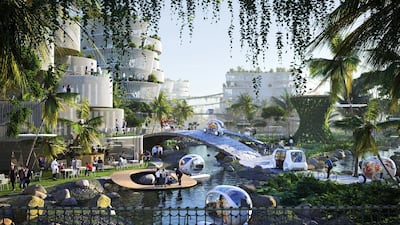Singapore has unveiled plans to build 8 Shenton Way, the country’s tallest building and its first "supertall" skyscraper.
The term supertall is used to describe buildings that exceed 300 metres in height and 8 Shenton Way will be a 63-storey, 305-metre-tall tower, envisioned to be one of Asia’s most sustainable skyscrapers.
It will include public spaces, offices, shops, a hotel and luxury residences.
American architectural firm SOM has released renderings that reveal a tower with a biophilic design, meaning it adapts to the natural world.
The building rises through a series of cascading rectangular forms with rooftop terraces that include gardens — nature and sustainability are driving forces behind the design, inspired by bamboo forests.
It is to be located at the intersection of Singapore’s Central Business District and Marina Bay, the historic Tanjong Pagar neighbourhood and the emerging Greater Southern Waterfront.
“8 Shenton Way will be the newest landmark on the Singapore skyline — a next-generation tower for the city,” said SOM partner Mustafa Abadan.
“Designed specifically with the tropical climate of Singapore in mind, this building will be one of the first post-pandemic mixed-use towers in the world with health and wellness as its primary design drivers. By seeking to achieve the city’s newest and most rigorous sustainability standards, our design will establish a new paradigm for resilient and elegant high-rise design in Singapore and beyond.”
The building’s facade will echo nature through its use of materials, including champagne-coloured terracotta and bamboo along the walls of the sky gardens, which will feature curved edges to create bay windows on almost every floor.
The facade will also be built using energy-efficient glazing, while recyclable aggregates will be used in its concrete structure, manufactured through a low-carbon process.
The tower will also include more than 107,000 square feet of elevated green space, with specific plant life chosen to attract birds and butterflies.
The building is scheduled for completion in 2028.

















